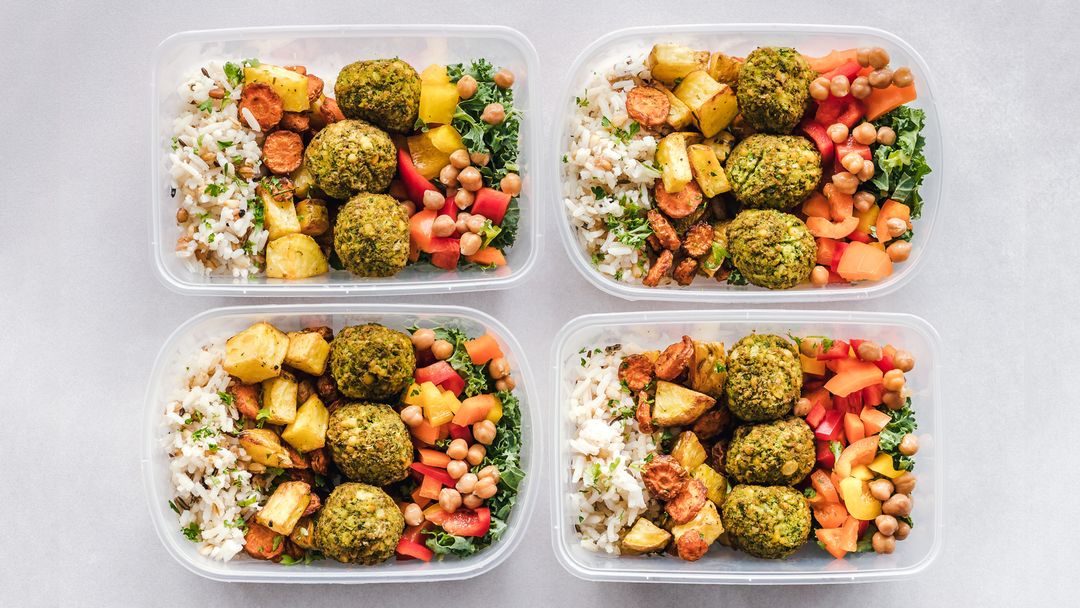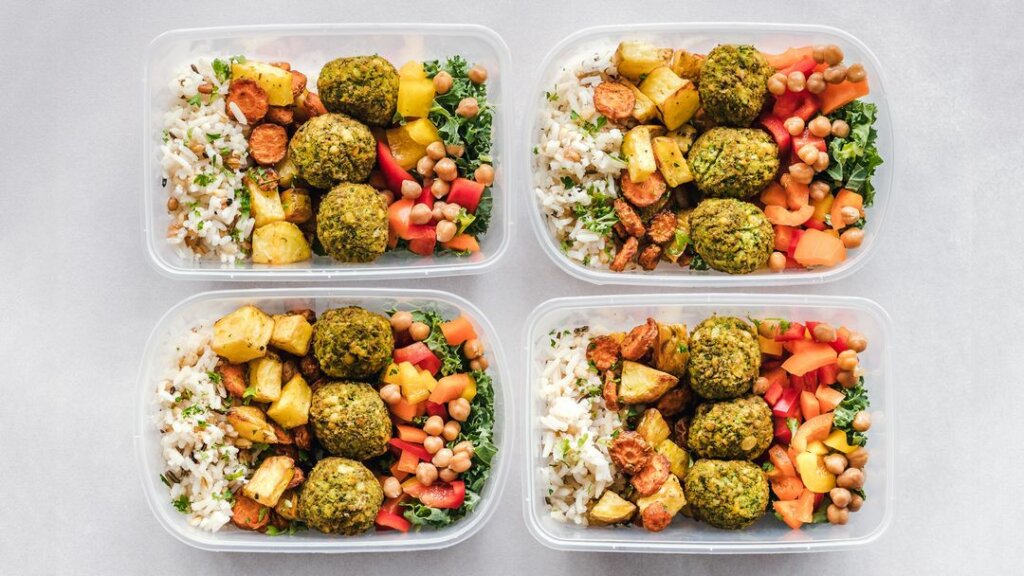You know eating balanced meals is the key to your long-term health. You know that to see (and feel) results, you need to be consistent in eating meals that meet your nutritional needs without going overboard. You also know that you can save time during the busy work week by meal prepping.
But even so, spending all day in the kitchen preparing meals really doesn’t sound like how you want to spend your Sundays.
If all these thoughts sound familiar to you, then this will be the ultimate cheat sheet for finally being able to plan your healthy meals without sacrificing the weekend.
How To Use This Cheat Sheet
The idea behind meal planning is preparing the same menu (or two, or three menus, depending on your time availability), for your lunch and snacks for every day you are at work.
The key to making sure your meals are balanced is compartmentalizing the food groups and portions you are going to include in each meal.
This cheat sheet will provide you with the general “formula” for how to plan two snacks and one lunch per day in terms of portion sizes and food groups. It will also suggest easy-to-prepare foods for each food group. You can mix and match the foods to build meals that make sense for you throughout the week.
Note that in terms of portions, everyone’s needs are slightly different depending on weight, sex, and activity level. You might need to adjust the portions if you feel too full or if you feel like you have barely eaten after finishing a meal. For more specific advice on portions and caloric needs, talk to a registered dietician.
Step 1: Get to Know the Food Groups
For practical purposes, we have created four general food groups to consider for building your meals.
- Complex carbohydrates
- Lean protein
- Healthy fats
- Fruits and vegetables
Some options for each food group include:
Complex Carbohydrates
- Whole grain bread (make sure the first ingredient is whole grain)
- Brown rice
- Quinoa
- Sweet potato
- Whole grain pasta
- Corn
- Legumes (like beans and garbanzos)
- Oatmeal
- Bulgur
Lean Protein
- Chicken
- Fish and shellfish
- Low-fat or non-fat dairy
- Tofu
- Nuts, nut butters, and seeds
- Pork loin
- Eggs
- Lean deli meats
Healthy Fats
- Nuts and seeds
- Avocado
- Olive oil or other vegetable oils
- Low-fat dressings or mayo
Fruits and Vegetables
- Any and all fruits and vegetables (except for starchy ones like potatoes, banana, and plantain, which, for the purposes of nutrient balance, are categorized as complex carbohydrates).
Extras
Certain foods don’t fall into any category and don’t provide significant nutritional value, but they make meals much more delicious. These include:
- Spices
- Moderate salt and pepper
- Mustard
Keep in mind that several of the foods above, although categorized in one group for practical purposes, also contain significant amounts of nutrients that normally correspond to another group. For example, legumes and quinoa are categorized as complex carbohydrates, but they are also a great source of plant-based protein.
Step 2: Portion Control
If you have a healthy balance of food groups, but portions are out of control, it can disrupt the balance in your meals. Try to stick to these general portions for each meal.
Morning Snack
- 1 serving vegetable (1/2 cup cooked, or 1 cup raw)
- 1 serving lean protein (3 oz meat and fish, ½ cup beans and grains, 2 tbsp. nut butters, 1 cup yogurt, or 1 oz. nuts)
Lunch
- 1 serving vegetable (1 cup cooked, or 2 cups raw)
- 1 serving lean protein (3 oz meat and fish, ½ cup beans and grains, 2 tbsp. nut butters, 1 cup yogurt, or 1 oz. nuts)
- 2 servings complex carbohydrates (1 slice bread, ½ cup oatmeal, whole grain pasta or rice)
- 1 serving healthy fat (2 tsp oil, 1/3 medium avocado, 1 oz. nuts)
Afternoon Snack
- 1 serving fruit
- 1 serving lean protein
Step 3: Build Easy Meals
Now that you have the “cheat sheet” it’s up to you to build meals that sound appetizing, and that will be easy for you to prepare. As an example, if you are looking for a good protein food, you don’t need to choose a fancy recipe for marinated chicken. Instead, look for quick options, like rotisserie chicken or canned white chunk tuna fish.
Here is an example menu for your two snacks and lunch:
Morning Snack
- 1 cup celery sticks
- 2 tbsp almond butter
Lunch
- 1 cup brown rice
- 6 oz steamed fish
- 2 cups mixed salad
- 2 tsp olive oil
Afternoon Snack
- 1 apple
- 1 string cheese (low fat)
This cheat sheet cuts hours off your meal-prep cooking and prep time. Not only should make it much easier for you to build your weekday meals, but you can also be sure that you will be eating in a very balanced manner. You can mix and match foods from different groups or mix it up a bit, so you don’t get bored eating the same thing every week. After a while, planning and making your meals for the week will become second nature.



